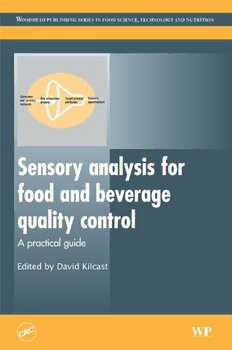
Sensory Analysis for Food and Beverage Quality Control: A Practical Guide (Woodhead Publishing Series in Food Science, Technology and Nutrition) PDF
392 Pages·2010·3.218 MB·English
Most books are stored in the elastic cloud where traffic is expensive. For this reason, we have a limit on daily download.
Preview Sensory Analysis for Food and Beverage Quality Control: A Practical Guide (Woodhead Publishing Series in Food Science, Technology and Nutrition)
Description:
Producing products of reliable quality is vitally important to the food and beverage industry. In particular, companies often fail to ensure that the sensory quality of their products remains consistent, leading to the sale of goods which fail to meet the desired specifications or are rejected by the consumer. This book is a practical guide for all those tasked with using sensory analysis for quality control (QC) of food and beverages. Chapters in part one cover the key aspects to consider when designing a sensory QC program. The second part of the book focuses on methods for sensory QC and statistical data analysis. Establishing product sensory specifications and combining instrumental and sensory methods are also covered. The final part of the book reviews the use of sensory QC programs in the food and beverage industry. Chapters on sensory QC for taint prevention and the application of sensory techniques for shelf-life assessment are followed by contributions reviewing sensory QC programs for different products, including ready meals, wine and fish. A chapter on sensory QC of products such as textiles, cosmetics and cars completes the volume. Sensory analysis for food and beverage quality control is an essential reference for anyone setting up or operating a sensory QC program, or researching sensory QC.
See more
The list of books you might like
Most books are stored in the elastic cloud where traffic is expensive. For this reason, we have a limit on daily download.
